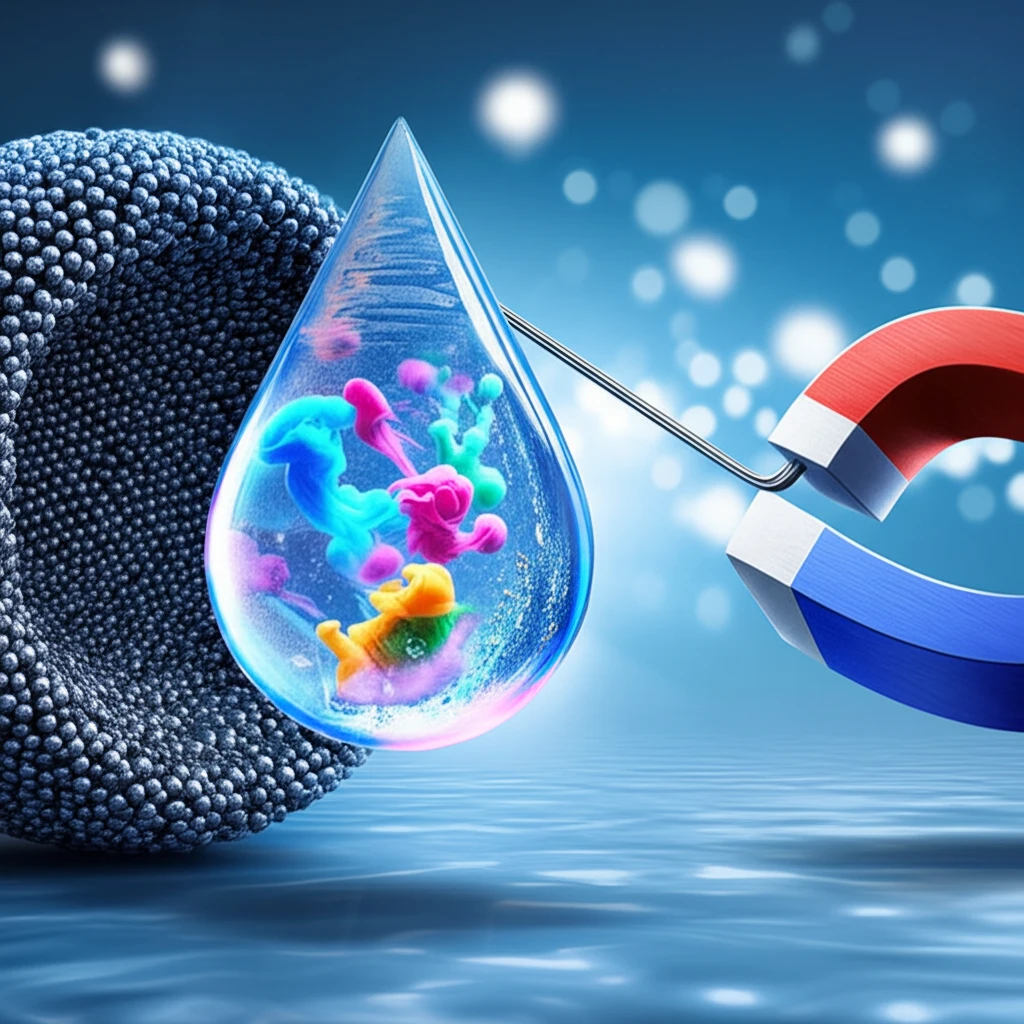
Magnetic Nanoparticles: A Simple Solution to Environmental Pollution?
"Explore how magnetic iron oxide nanocomposites are revolutionizing water treatment by offering a sustainable and efficient method for removing heavy metals and dyes."
In our increasingly industrialized world, the release of harmful pollutants into the environment has become a critical concern. Heavy metals and dyes, byproducts of numerous industrial processes, contaminate water sources, posing significant risks to both human health and ecological balance. Traditional water treatment methods often fall short in effectively removing these pollutants, highlighting the urgent need for innovative and sustainable solutions.
Enter magnetic iron oxide nanocomposites: a promising technology that combines the unique properties of nanomaterials with the ease of magnetic separation. These tiny particles, engineered with specific surface properties, can efficiently adsorb heavy metals and dyes from contaminated water. What sets them apart is their ability to be easily separated and recovered using an external magnet, paving the way for more efficient and environmentally friendly water treatment processes.
This article explores the potential of magnetic iron oxide nanocomposites in revolutionizing water purification. We will delve into the synthesis, properties, and application of these materials, examining how they can address the challenges of traditional methods and contribute to a cleaner, more sustainable future.
Why Magnetic Nanoparticles?

Magnetic nanoparticles (MNPs) possess a unique set of characteristics that make them ideal for environmental applications. Composed of iron oxide, these materials are generally non-toxic, recyclable, and reusable, aligning with the principles of green chemistry. Their magnetic behavior allows for easy separation from complex mixtures using an external magnetic field, avoiding the need for costly and energy-intensive filtration or centrifugation methods. The ability to modify their surface chemistry enables the design of MNPs tailored to selectively adsorb specific pollutants, enhancing their efficiency and reducing waste.
- Size and Shape: The size and shape of MNPs influence their surface area and adsorption capacity. Smaller nanoparticles generally exhibit higher surface areas, leading to increased interaction with pollutants.
- Composition: The ratio of iron oxide and any surface modifiers affects the magnetic properties and chemical reactivity of the nanocomposite.
- Surface Chemistry: Modifying the surface with specific functional groups can enhance the selectivity and affinity of MNPs towards target pollutants.
- Magnetic Properties: High magnetization allows for easy and efficient separation, minimizing material loss and reducing operational costs.
The Future of Clean Water
Magnetic iron oxide nanocomposites represent a significant step towards sustainable and efficient water treatment. Their unique properties, combined with continuous advancements in synthesis and application, hold immense potential for addressing the global challenge of water pollution. Although more research is still needed into long term studies on toxicity levels, and the long term health effects of these materials, their unique and high performance is undeniable.
